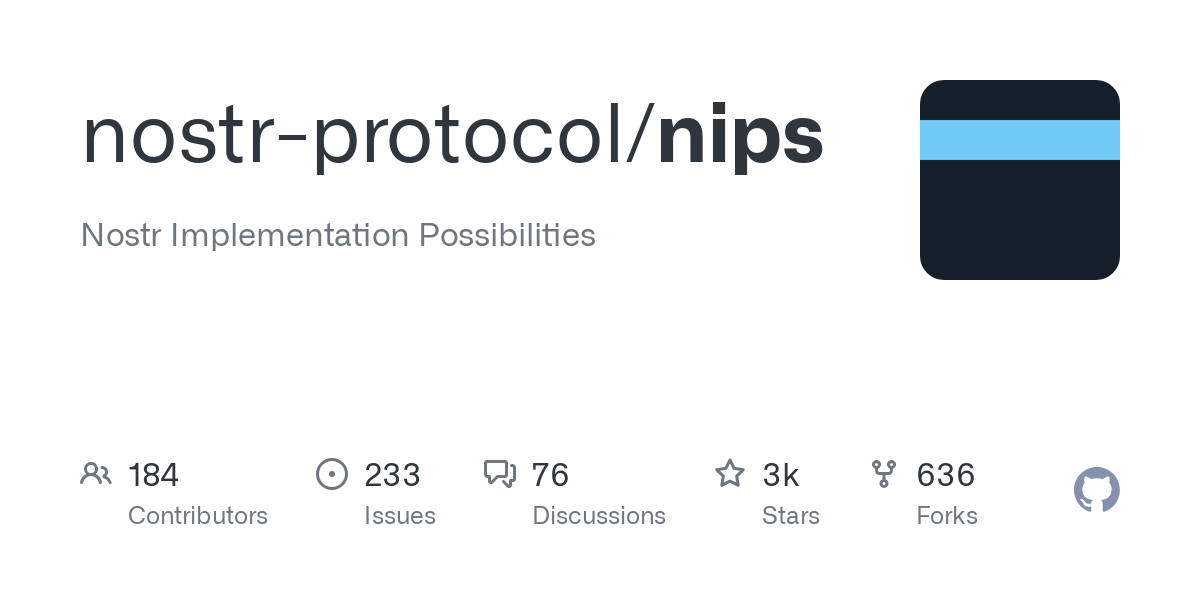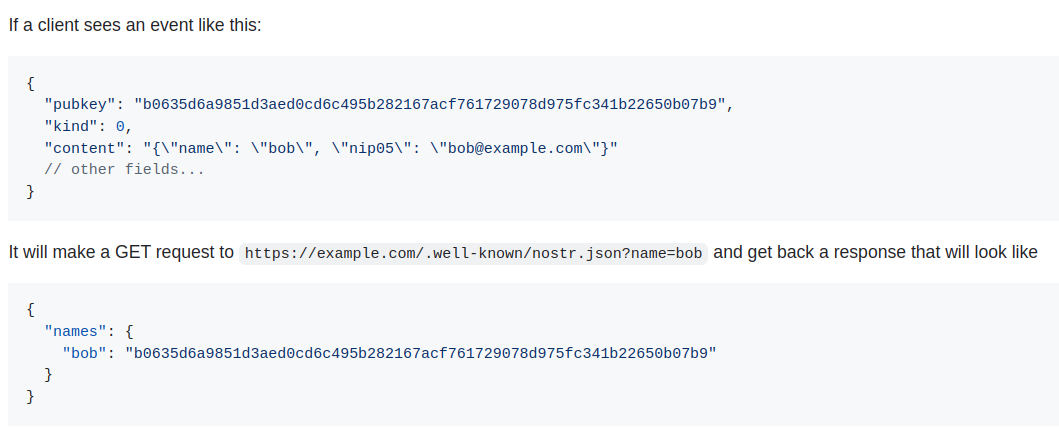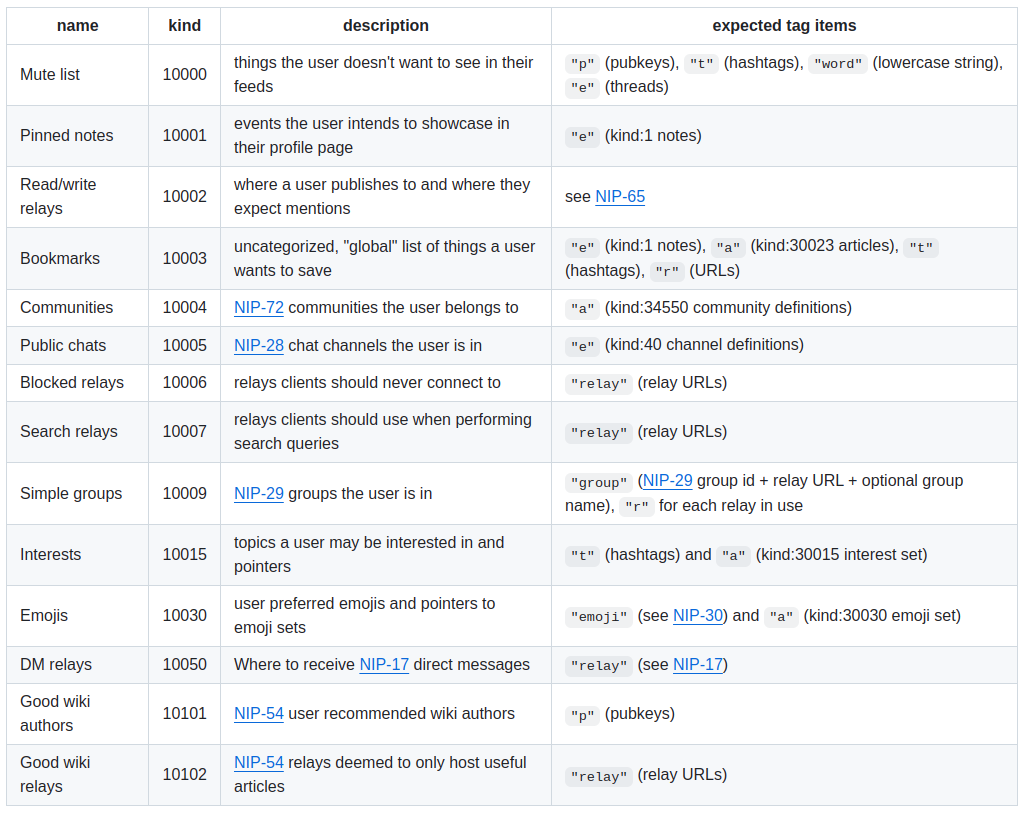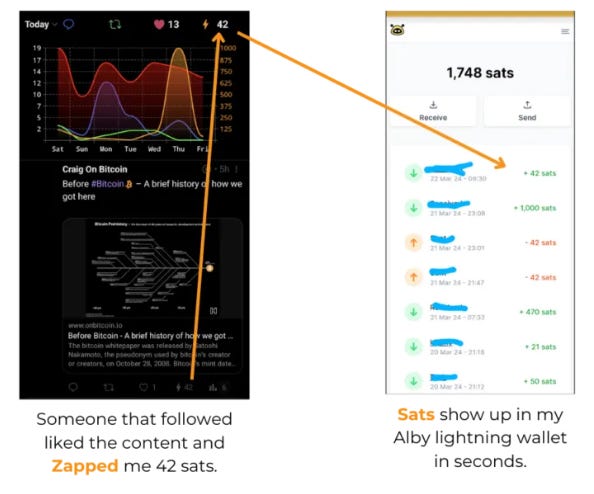Nostr Implementation Possibilities or NIPs for short are the building blocks that extend Nostr’s barebones protocol into something powerful and practical.
Think of them as optional upgrades: each one adds a new feature or refines how the system works, all while keeping things interoperable and decentralized.
With dozens of NIPs already in play, I’ve picked out the most important and promising ones that could shape Nostr’s future.
NIP-01: The Bedrock of Nostr
You can’t talk about NIPs without starting at NIP-01, the core spec that defines Nostr’s DNA.
It outlines how clients (apps) talk to relays (servers) using WebSockets and how data is packaged into signed "events" (think posts, messages, or anything else).
{
"id": <32-bytes lowercase hex-encoded sha256 of the serialized event data>,
"pubkey": <32-bytes lowercase hex-encoded public key of the event creator>,
"created_at": <unix timestamp in seconds>,
"kind": <integer between 0 and 65535>,
"tags": [
[<arbitrary string>...],
// ...
],
"content": <arbitrary string>,
"sig": <64-bytes lowercase hex of the signature of the sha256 hash of the serialized event data, which is the same as the "id" field>
}It’s minimal by design—short text notes are the default—but that simplicity is its strength. Every other NIP builds on this foundation, making NIP-01 the most important simply because it’s the glue holding Nostr together.
Why it matters: Without NIP-01’s elegant simplicity, Nostr wouldn’t be as accessible to developers or resilient against censorship. It’s the starting line for everything else.
NIP-17: Encrypted Direct Messaging
Privacy is a big deal in a world where Big Tech harvests every click.
NIP-04 was the first encrypted direct messaging NIP for Nostr, letting users send private notes that only the recipient can decode. It was deprecated in favor of NIP-17.
It uses the same public/private key system as the rest of Nostr, adding a layer of end-to-end encryption that’s both secure and seamless.
Why it’s promising: As people grow wary of surveillance, NIP-17 makes Nostr a viable alternative to apps like WhatsApp or Signal.
It’s a step toward a fully private social ecosystem—imagine DMs that no relay operator can snoop on.
NIP-05: Human-Readable Identities
Nostr’s reliance on cryptographic keys (long strings like npub1...) is great for security but terrible for usability.
Enter NIP-05, which maps those keys to human-friendly identifiers, like alice@domain.com.
It’s not a centralized username system—anyone can run their own NIP-05 server—but it mimics the familiarity of email or Twitter handles.
Why it matters: Adoption hinges on ease of use. NIP-05 bridges the gap between tech-savvy early adopters and everyday users, making Nostr feel less like a geeky experiment and more like a practical tool.
NIP-10: Threading and Conversations
Social media isn’t just about broadcasting—it’s about dialogue. NIP-10 introduces tagging standards for replies, mentions, and threaded conversations.
It’s a small tweak with big implications, turning Nostr’s flat stream of events into something structured and interactive.
Why it’s promising: This is the backbone of a Twitter-like experience on Nostr. Without NIP-10, you’d have a firehose of disconnected posts; with it, you get communities, debates, and memes—all decentralized.
NIP-19: Shareable Links for a Connected Ecosystem
Ever tried sharing a 64-character public key with a friend? It’s a nightmare.
NIP-19 fixes that by creating standardized, shareable "nostr:" URLs—like npub1... for public keys or nevent1... for specific posts.
It’s a bit like QR codes or shortened links, but built into the protocol.
The hex public key:
3bf0c63fcb93463407af97a5e5ee64fa883d107ef9e558472c4eb9aaaefa459d translates to:
npub180cvv07tjdrrgpa0j7j7tmnyl2yr6yr7l8j4s3evf6u64th6gkwsyjh6w6Why it matters: NIP-19 makes Nostr user-friendly and viral-ready. Want to invite someone to your profile or share a killer post? Just send a clean, clickable link. It’s a small feature with massive potential for growth.
NIP-26: Delegated Signing
Here’s where things get futuristic. NIP-26 lets users delegate signing authority to another key—say, a hardware wallet or a trusted app—without handing over their main private key.
[
"delegation",
<pubkey of the delegator>,
<conditions query string>,
<delegation token: 64-byte Schnorr signature of the sha256 hash of the delegation string>
]It’s like giving a friend a spare key to your mailbox, but not your house.
Why it’s promising: Security and convenience don’t always play nice, but NIP-26 could make Nostr safer (think cold storage for keys) and more flexible (e.g., letting a bot post on your behalf). It’s a power-user feature with real-world chops.
NIP-51: Lists for a Personalized Web
Imagine curating your own mute lists, bookmark collections, or interest groups—all decentralized.
NIP-51 makes that possible by standardizing how users create and share lists of people, events, or relays.
It’s a building block for customization in a protocol that’s otherwise raw and unfiltered.
Why it matters: Social platforms thrive on personalization. NIP-51 empowers users to shape their experience without relying on algorithmic overlords, paving the way for tailored feeds and communities.
NIP-57: Zaps and the Lightning Connection
Perhaps the flashiest NIP, NIP-57 integrates Nostr with Bitcoin’s Lightning Network for instant microtransactions called "zaps."
See a post you love? Zap the author a few sats (tiny fractions of a Bitcoin) as a tip. It’s seamless, decentralized, and ties Nostr to the crypto economy.
Why it’s promising: Monetization is a holy grail for creators, and NIP-57 could turn Nostr into a platform where value flows directly from fans to makers. No middlemen, no ads—just pure, peer-to-peer appreciation. It’s a game-changer for artists, writers, and even meme lords.
Why These NIPs Are a Big Deal
Nostr’s beauty lies in its modularity.
These NIPs don’t just tweak the protocol—they transform it into a contender for the decentralized future. NIP-01 keeps it simple and stable. NIP-17 and NIP-26 bolster privacy and security. NIP-05, NIP-10, and NIP-19 make it accessible and social.
NIP-51 adds depth, and NIP-57 ties it to a real-world economy. Together, they’re turning Nostr from a niche experiment into a Swiss Army knife of possibilities.
The Road Ahead
Nostr isn’t perfect yet—relays can still censor, onboarding is clunky, and the ecosystem is young.
But these NIPs show a clear trajectory: a platform that’s private, user-driven, and economically viable. The community’s open approach to NIPs means more innovations are coming.
For now, these standout NIPs are the ones to watch. They’re not just technical specs; they’re the seeds of a freer internet.
If you’re curious about Nostr, grab a client like Damus or Primal, generate a keypair, and see where these possibilities take you.





